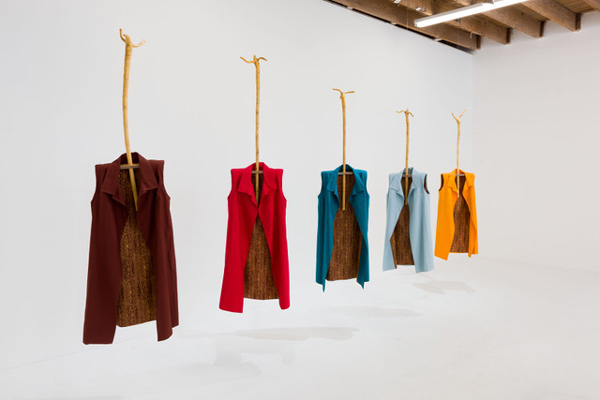Spiritual aspirations present this fundamental dilemma: we exist as physical beings in a material world of far more palpable empirical reality than anything incorporeal, with pragmatic demands inevitably more urgent than intangibles. Without surplus resources, how does one afford the time to meditate, the money for yoga classes, or the peace of mind to entertain any such immaterial considerations? Phyllis Green’s work evokes this timeless tug-of-war between concrete and supernatural. Sidestepping cynicism and camp, Green creates objects appearing evenly suspended at the fortuitous fulcrum where material luxury meets spiritual fulfillment.

Phyllis Green, Red Hat (2015), courtesy of the artist and Chimento Contemporary. Photo: Ruben Diaz.
The title of her current show, “Life After Life After Life,” connotes reincarnation while also invoking the boring predictability often accompanying New Age inculcations. Of eccentric stylishness and plausible functionality as furniture or clothing, Green’s artworks affect commodified aspects ranging from mass-market to upscale.
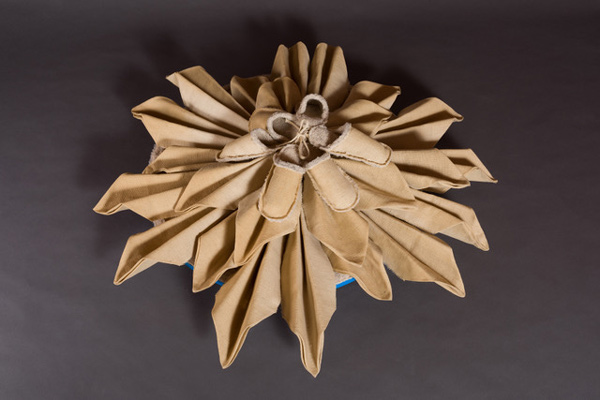
Phyllis Green, Standing on a Lotus (2016), courtesy of the artist and Chimento Contemporary. Photo: Ruben Diaz.
Eastern deities like Buddha and Vishnu are often depicted standing on lotuses. Standing on a Lotus (2016) is a floor piece made of rough fabric arranged in the shape of its titular flower atop a lazy Susan. A central ring of bedroom slippers inside the folded cloth augments the title’s implication. Nearby, crutches and pads of imitation sheepskin are mysterious tools for engaging the kinetic lotus. The wool and slippers connote a certain degree of comfortable complacence. So does Feather Carrier (2017), an elegant round stool covered in white feathers appearing representative of a highly processed version of Native American spiritualism.
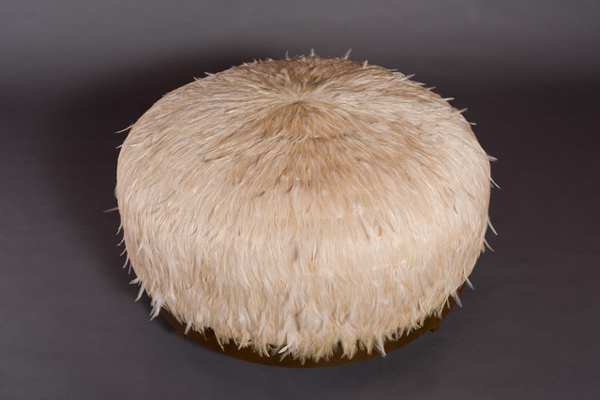
Phyllis Green, Feather Carrier (2017), courtesy of the artist and Chimento Contemporary. Photo: Ruben Diaz.
It is said that physical relaxation is a prerequisite for spiritual insight. Green’s artworks evoke purchased comforts as ostensible facilitators for enlightenment. Himalayan salt lamps, aromatherapy diffusers, and yoga accessories come to mind.
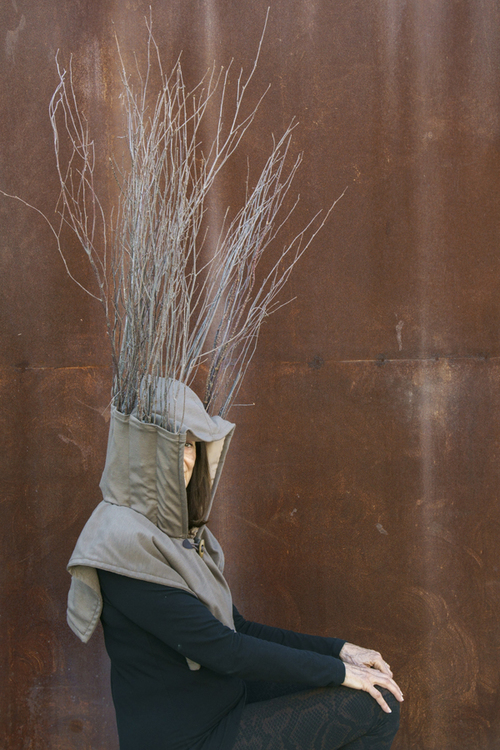
Phyllis Green, Samidh II (hood) (2014), courtesy of the artist and Chimento Contemporary. Photo: Ave Pildas.
The wearable Five Sheaths (2017) are hung as in a boutique, on walking stick-shaped hangers symbolizing the peripatetic traveler seeking enlightenment. By way of a November 18 performance, Green exercised her artworks’ ceremonial potential, invoking physical rituals as spiritual metaphors.
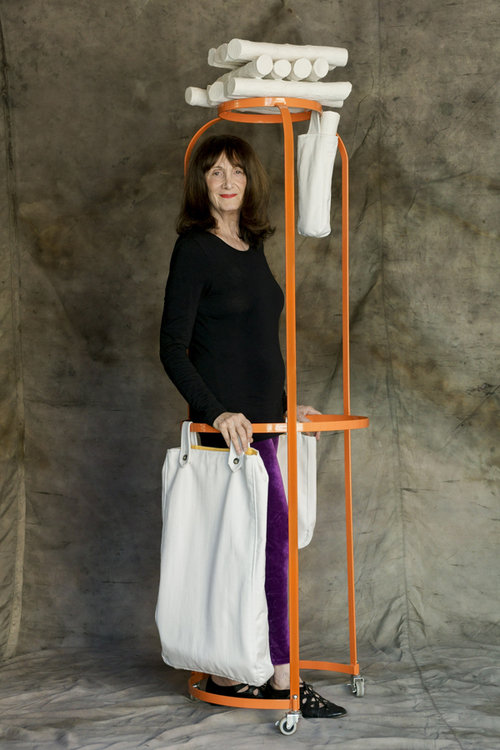
Phyllis Green, Orange (2015), courtesy of the artist and Chimento Contemporary. Photo: Ave Pildas.
Practicing art can be a spiritual journey; but in order to survive, the average artist must create tangible price-tagged objects available to anyone who can afford them. Through her work, Green conveys, without overly sentimentalizing or satirizing, the inescapably transactional nature of both art and spirituality.
Phyllis Green, “Life After Life After Life,” Nov. 4-Dec. 16 at Chimento Contemporary, 622 South Anderson Street, Space 105, Los Angeles, CA 90023. www.chimentocontemporary.net

